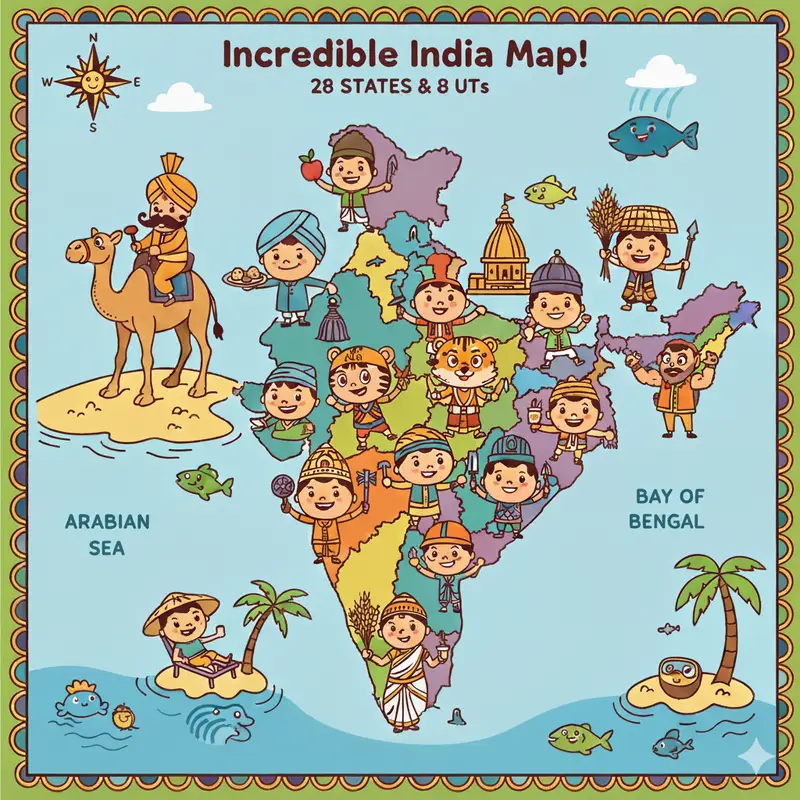Dull Verbs vs Descriptive Verbs
Writing is not just about putting words on paper—it’s about bringing ideas to life. But here’s the challenge: many children rely too much on dull verbs like said, went, did, or looked. While these verbs are correct, they make writing flat and uninteresting.
As parents and teachers, one of the best ways to support young writers is to help them replace dull verbs with descriptive verbs. This simple shift can transform their writing from plain to powerful.
In this blog, You’ll explore:
- What dull verbs are
- Why descriptive verbs are important
- Examples with meanings and sentences
- Teaching strategies for classrooms & at home
- Worksheets and activities you can try today
What Are Dull Verbs?
Dull verbs are common, overused verbs that don’t give much detail. They tell the action but not how the action is happening.
👉 Examples of dull verbs:
- Said
- Went
- Did
- Made
- Looked
While these verbs are fine for beginners, overusing them makes writing repetitive.
Example:
- She said she was tired. (Flat)
Now compare with a descriptive verb:
- She whispered she was tired. (Instantly more vivid!)
Read More: 10 Easy Steps to Master English Tenses for Kids Rules, Examples, and Exercises
Why Teach Descriptive Verbs?
Descriptive verbs add color, detail, and imagination. They help kids:
- Show emotions and moods in stories
- Engage readers with clear images
- Develop stronger vocabulary
- Improve creative and academic writing
Think of descriptive verbs as a superpower that makes writing more interesting.
Examples of Descriptive Verbs (With Meanings & Sentences)
Here’s a small reference chart you can use in class or at home:
| Dull Verb | Descriptive Verb | Meaning | Example Sentence |
|---|---|---|---|
| Said | Whispered | Said very softly | She whispered a secret into her friend’s ear. |
| Said | Announced | Said loudly and officially | The teacher announced the start of the quiz. |
| Went | Rushed | Went quickly, in a hurry | He rushed to catch the school bus. |
| Went | Strolled | Walked slowly, relaxed | We strolled through the park after dinner. |
| Looked | Glanced | Looked quickly | She glanced at the clock and gasped. |
| Looked | Stared | Looked for a long time | The child stared at the magician in awe. |
| Did | Created | Made something new | She created a colorful painting for the wall. |
| Did | Attempted | Tried, gave effort | He attempted the tricky puzzle bravely. |
By teaching these swaps, kids learn that a single verb can change the entire feel of a sentence.
How to Teach Kids Descriptive Verbs
Here are simple, effective strategies:
1. Verb Swap Game
- Write a sentence with a dull verb on the board: He went to the shop.
- Ask students to replace went with a more descriptive verb: He hurried to the shop / He wandered to the shop.
- Discuss how the meaning changes.
2. Said Is Dead Wall
- Create a classroom chart with alternatives to said: whispered, shouted, begged, announced, replied.
- Let kids use it during story writing.
3. Role-Play
- Say a dull verb like walked. Ask kids to act it out in different ways: tiptoed, marched, staggered.
- This builds a connection between action and vocabulary.
4. Descriptive Verb Journals
Encourage kids to keep a small notebook. Every time they learn a new descriptive verb, they add:
- The word
- Its meaning
- A sample sentence
This habit builds a personalized vocabulary bank.
Fun Activities for Parents & Teachers
- Fill in the Blanks: Give sentences with missing verbs. Kids choose the most descriptive option.
- Matching Game: Match dull verbs with their descriptive alternatives.
- Story Rewrite: Rewrite a short story using stronger verbs.
- Verb Challenge: Give a dull verb (e.g., said) and ask kids to come up with 5 alternatives.
Teaching Tips for Parents
If you’re a parent searching for ways to improve your child’s writing skills at home, here are easy daily activities:
- During bedtime stories, point out verbs and ask: “Can we say this in another way?”
- While doing homework, highlight dull verbs and suggest one descriptive alternative.
- Encourage your child to keep a “Word Treasure Box” with slips of paper containing new verbs.
Remember: building vocabulary doesn’t have to feel like work—it can be fun and interactive.
Why This Matters
Helping kids understand dull vs descriptive verbs is not just about grammar—it’s about teaching them to:
✨ Express themselves clearly
✨ Build confidence in writing
✨ Enjoy the creative process
When children learn to swap dull verbs for descriptive ones, they take the first step toward becoming confident young writers.
Read more: Enhancing Vocabulary Fun and Effective Ways to Learn New Words
Final Takeaway for Teachers & Parents
- Start small: focus on one dull verb at a time (said, went, looked).
- Use visuals, charts, and games to keep learning fun.
- Celebrate small wins—every new verb learned is a big step forward.
By giving children this tool, we’re not just teaching grammar—we’re unlocking their imagination.



